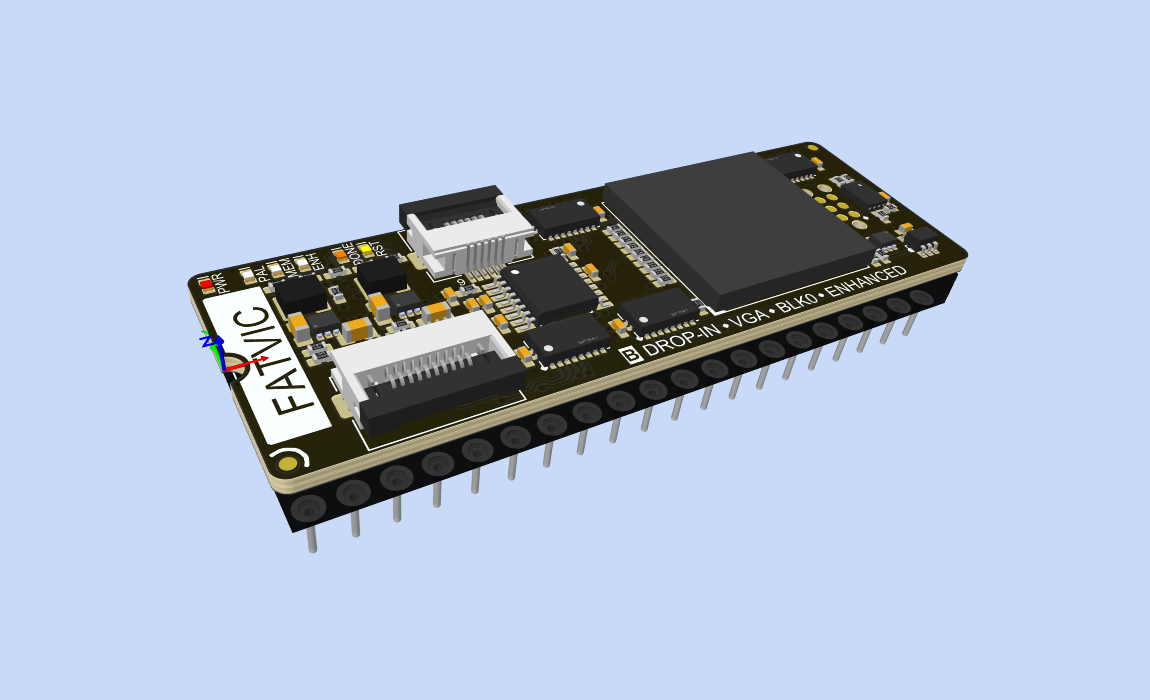The FATVIC has all the features that the 6560 and 6561 has.
FAYVIC is a drop-in replacement for 6560 or 6561. It automatically adjust to the clockfrequency of the NTSC (6560) or the PAL /6561) version.
It also has the same physical size as the 40 pin DIP package, with a clear notch for correct orientation.
The electronics is basically buffers for 5V to 3.3V level shifting, the FPGA (Lattice ECP-5) with NOR FLASH for configuration, 24bit stereo codec, power regulators for core and auxiliary voltages and finally some analog parts for composite and VGA video.
The VGA is conencted to a ZIF socket. It has a small Rigid FPC with a mini DIN that sits in a dummy DIN connector. In this way it can use the existing hole in the bread bin enclosure, for nice look and feel.
Apart from the drop-in replacement funtionallity the FATVIC has the following target features.
Memory
With the addition of the FATVIC director in place of the 74LS138 BLKn decoder, the memory can be extended.
Inside the FPGA are 8k SRAM for the BLK0. All of these 8k are addressable by the FATVIC. The director adapter also disables the cartridge ports RAM1,2 and 3 chip select signals.
Inside the FPGA is also SRAM for the CHARROM as well as sprite information.
The Color SRAM is 8 bit wide and holds additional information.
The FATVIC has 32 additional registers that is hidden at power up and reset.
Audio / Video
VGA output through a mini DIN mounted in the same space as the ordinary audio/video DIN connector. Changes done are reversable.
It also has a 24bit stereo codec.
Graphics
The FATVIC has some additional features for graphics. First of it has 16 times the color SRAM for a new color for each scanline instead of each 8 scanlines. This for compatibility with various modifications.
There is a enhanced text mode display with 40 x 25 and 80 x 25 characters.
Besides that it is not really set in stone wjat I will go for. It is a matter of walking a fine line between keeping this a VIC-20 with slight enhancements, and making a Frankensteins monster, just because. For that I have the NeoCore 65C816 based computer.
But I have some ideas for both extended tile management, a bitmap mode with hardware accelerated drawing functions and block move. Also 8-32 sprites is also on the drawing board.
The future will see what I end up doing. Since much of this will be reused for NeoCore, there is not a question of development resources.
